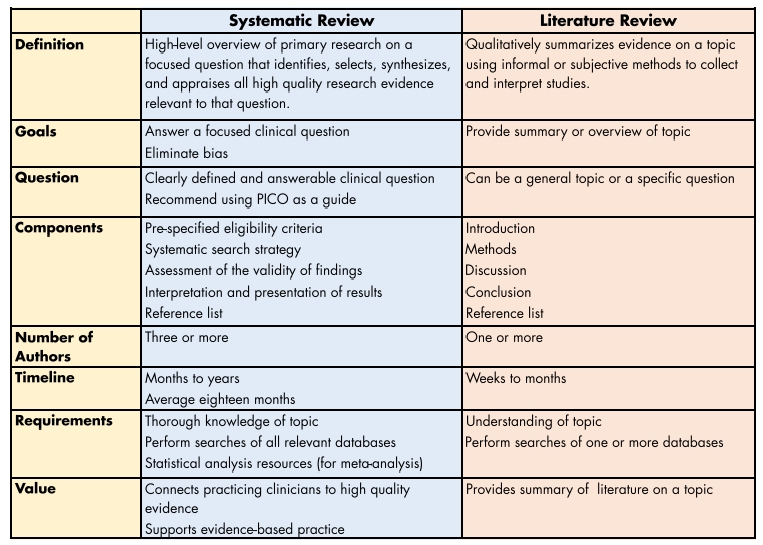🆚Comparison between SLR and Literature Reviews

In the world of academic research, there are two main ways to dig into existing studies and build a solid foundation for your own research: Systematic Literature Reviews (SLRs) and Literature Reviews. These approaches have distinct purposes and methods. Let's take a simple look at how they compare:
Purpose and Scope
Provides an overview of existing literature on a topic. Aims to summarize, synthesize, and analyze research.
Conducted to answer specific research questions. Treats literature as a data source.
Research Questions
May have broader, exploratory research questions. You might ask general questions like "What's known about this topic?" and "What trends or patterns do we see?"
SLRs are all about specific questions. You start with clear, well-defined research questions, and your whole review centers around finding answers to those questions.
Search and Selection Process
Involves literature search, but the process may not be highly systematic.
Adheres to a systematic search strategy with strict inclusion and exclusion criteria.
Inclusion Criteria
May include a wide range of sources, such as books, conference papers, and grey literature.
Typically prioritizes peer-reviewed journal articles and conference papers.
Data Synthesis
Data synthesis methods can vary, including narrative discussions, thematic analysis, etc.
Employs structured methods for data extraction and often uses statistical or meta-analytic techniques.
Reporting Standards
Reporting standards may vary, with no specific guidelines for documentation.
Adheres to established reporting standards (e.g., PRISMA) to ensure transparency and reproducibility.
Bias and Reproducibility
May be susceptible to selection bias and subjectivity.
Aims to minimize bias through rigorous methodology, enhancing reproducibility and transparency.
Systematic reviews and literature reviews are easy to get mixed up but are two very different types of research. Use the chart below to consider and confirm what type of review you are interested in.

These differences highlight how SLRs differ from traditional Literature Reviews in terms of their research objectives, methodology, and reporting standards. Researchers choose between these approaches based on the specific goals of their research and the depth of analysis required.
Last updated